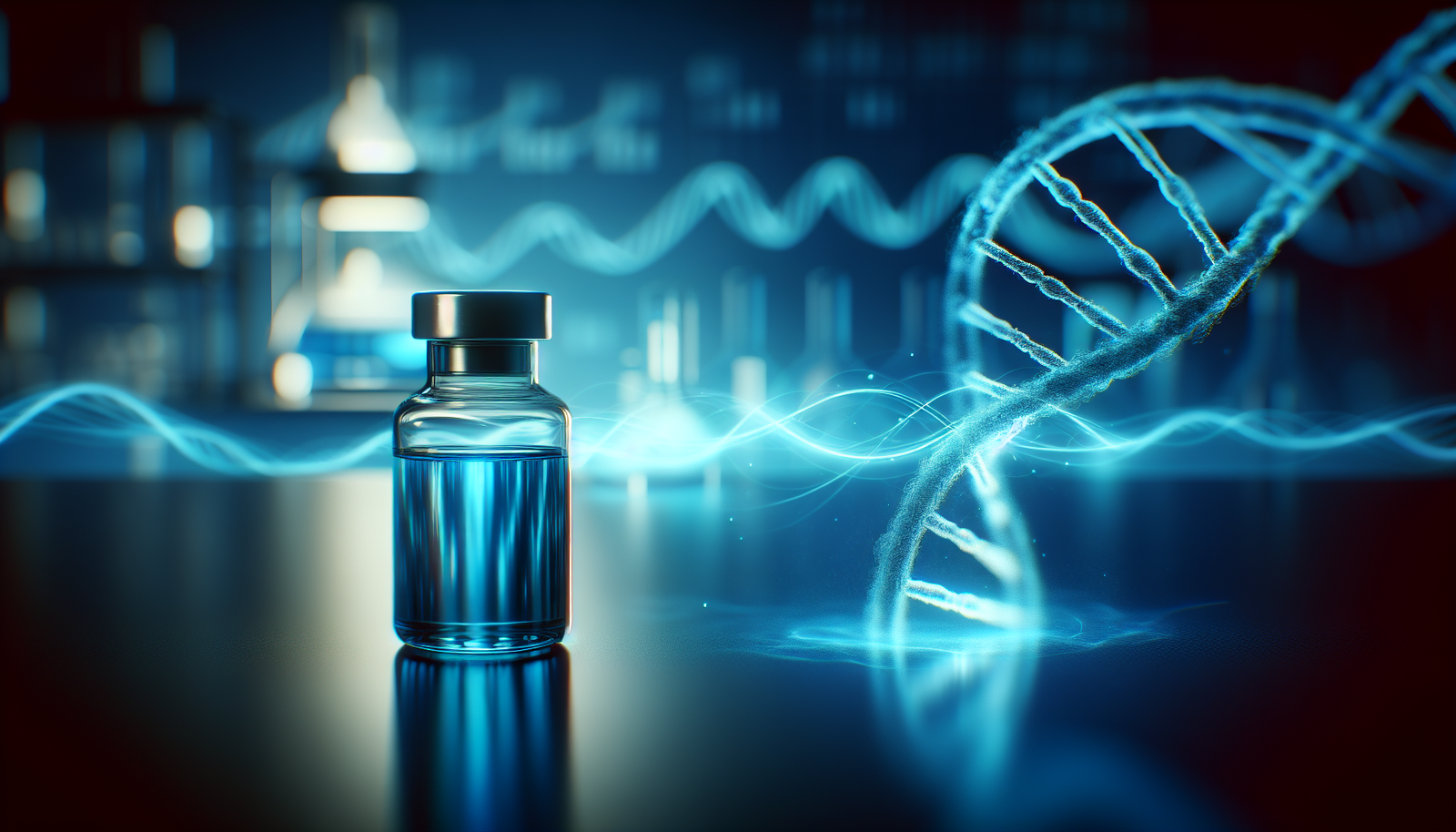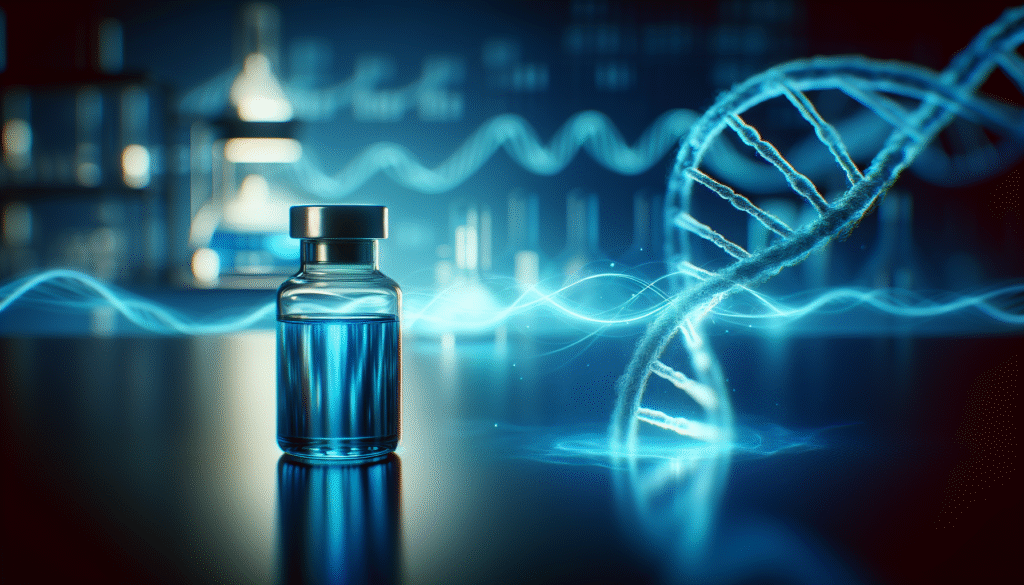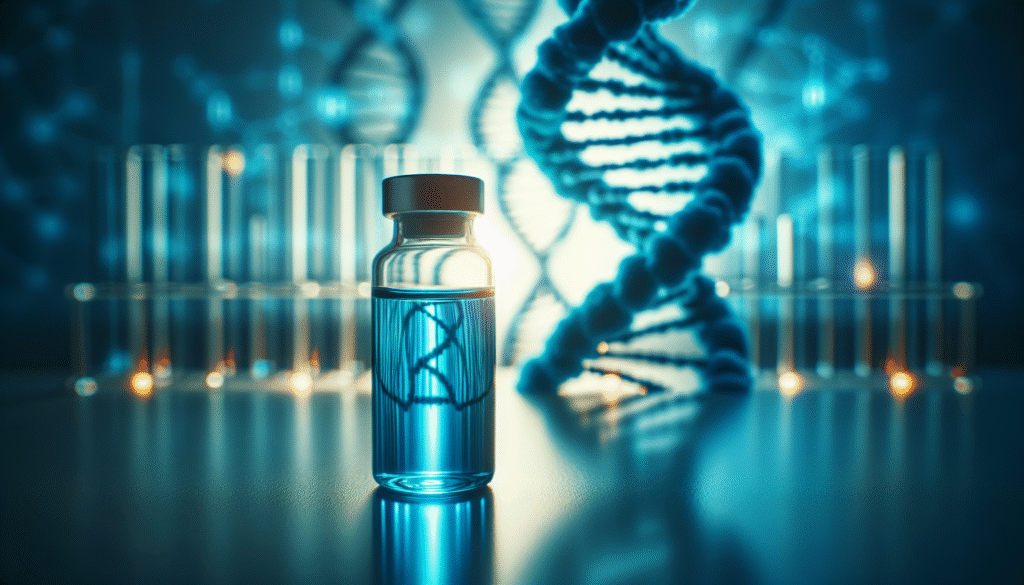
What role does methylene blue play in DNA repair? Understanding the impact of this compound on cellular processes can illuminate new pathways for medical interventions and therapeutic strategies.
Introduction
Methylene blue, a historically significant compound, has garnered attention across various fields, from art to medicine. Initially recognized as a dye, its therapeutic potential has been unearthed over time. One area where it shows promise is in the realm of DNA repair. In this discussion, you will not only gain insight into methylene blue but also comprehend how its properties can influence crucial biological mechanisms.
Understanding Methylene Blue
What is Methylene Blue?
Methylene blue, or methylthioninium chloride, is a synthetic dye that has been utilized in various applications since it was first created in the 19th century. Originally designed for textile coloring, it quickly made its way into biology and medicine due to its unique properties.
Historical Context of Methylene Blue
Initially employed in the treatment of malaria, methylene blue was one of the first effective drugs against this disease. Over time, its applications expanded to include treating methemoglobinemia, a condition where hemoglobin is unable to transport oxygen effectively. Its historical use lays the foundation for understanding its more recent therapeutic applications, particularly in neuroprotection and cellular health.

The Biology of DNA Repair
What is DNA Repair?
DNA repair is a crucial cellular process that maintains genetic integrity by identifying and correcting errors in the DNA sequence. It ensures that cells function properly and that genetic information is accurately passed to daughter cells during replication.
Types of DNA Damage
DNA can be damaged by a variety of factors, including environmental influences like UV radiation, chemical exposure, and biological processes such as oxidative stress. There are several types of DNA damage, including:
- Single-Strand Breaks (SSBs): Affect one strand of the DNA double helix.
- Double-Strand Breaks (DSBs): Involve both strands and are particularly harmful.
- Base Modifications: Changes to DNA bases that can lead to mutations.
- Crosslinking: Bonds formed between different strands of DNA or between DNA and proteins.
Understanding these types of damage is vital for exploring how methylene blue could contribute to repair mechanisms.
DNA Repair Pathways
Cells utilize several pathways to repair damaged DNA, each tailored for specific types of damage. Here are the main pathways:
| Repair Pathway | Function |
|---|---|
| Base Excision Repair (BER) | Corrects small, non-helix-distorting base lesions. |
| Nucleotide Excision Repair (NER) | Removes bulky DNA adducts and helix-distorting lesions. |
| Mismatched Repair (MMR) | Fixes base-pair mismatches. |
| Homologous Recombination (HR) | Repairs double-strand breaks using a homologous template. |
| Non-Homologous End Joining (NHEJ) | Joins broken DNA ends directly without a template. |
Each pathway plays a significant role in cellular resilience, protecting against genomic instability that can lead to cancer and other diseases.
Methylene Blue’s Mechanisms of Action
Antioxidant Properties
One of the key features of methylene blue is its ability to act as an antioxidant. It can scavenge free radicals, thus reducing oxidative stress in cells. This property is particularly pertinent to DNA repair, as oxidative damage is a major contributor to DNA strand breaks and mutations.
Role of Methylene Blue in Cellular Metabolism
Methylene blue is also known to modulate cellular metabolism by influencing mitochondrial function. Mitochondria are critical for ATP production and play a significant role in cellular energy dynamics. By enhancing mitochondrial activity, methylene blue may indirectly support DNA repair processes by providing cells with the necessary energy to undertake repair mechanisms effectively.
Potential to Enhance DNA Repair Pathways
Recent studies suggest that methylene blue may enhance the efficiency of various DNA repair mechanisms. Its interaction with key enzymes involved in DNA repair has garnered considerable research interest. To understand this influence better, consider the following ways methylene blue may enhance DNA repair:
-
Activation of Repair Enzymes: Methylene blue may activate enzymes involved in the DNA repair process, thereby accelerating repair rates.
-
Facilitation of Cellular Signaling: It may enhance signaling pathways that promote repair responses, improving cellular resilience against DNA damage.
-
Reduction of Repair Time: By mitigating oxidative stress, methylene blue may shorten the time required for cells to repair damaged DNA, ultimately improving cell viability.

Clinical Implications of Methylene Blue
Neuroprotection and Cognitive Function
Current research demonstrates that methylene blue exhibits neuroprotective properties. Its antioxidant capabilities may protect neurons from DNA damage, which is especially relevant in neurodegenerative diseases. When considering cognitive function, protecting neural DNA integrity could translate to improved outcomes in disorders like Alzheimer’s and Parkinson’s disease.
Cancer Treatment Potential
The relationship between methylene blue and DNA repair also holds promise for oncology. Cancer cells frequently exhibit faulty repair mechanisms, making targeted therapies that exploit these weaknesses particularly appealing. Methylene blue’s ability to enhance DNA repair could lead to more effective treatment strategies that sensitize cancer cells to radiation or chemotherapeutic agents.
Cardiovascular Health
Emerging studies suggest that methylene blue may also play a role in cardiovascular health by supporting endothelial function and reducing oxidative stress. This connection to cardiovascular disease emphasizes the multifaceted implications of methylene blue and its potential role in preserving DNA integrity at the cellular level.
Research Studies on Methylene Blue and DNA Repair
Overview of Key Studies
Several studies have begun to elucidate the connection between methylene blue and DNA repair. Below are highlights from significant research findings:
-
Enhancement of Repair Mechanisms: A study demonstrated that cells exposed to methylene blue exhibited enhanced DNA repair rates after oxidative damage, suggesting a protective effect.
-
Direct Interaction with DNA Repair Proteins: Research indicated that methylene blue binds to certain DNA repair proteins, potentially altering their activity to promote faster repair.
-
Impact on Mitochondrial Function: Some studies found that methylene blue improved mitochondrial function, correlating with enhanced cellular energy availability essential for DNA repair processes.
Limitations and Considerations
While the findings on methylene blue’s effects on DNA repair are promising, it is essential to consider the limitations of current research:
-
Dosage Variability: Effects may vary significantly depending on the concentrations used in experiments compared to potential therapeutic doses in humans.
-
Cell Type Specificity: Different cell types may respond differently to methylene blue, necessitating further investigations into its effects across various tissues.
-
Long-Term Effects: The long-term implications of methylene blue exposure remain under-studied, requiring more extensive safety evaluations.
Future Directions in Research
Expanding Applications
As research evolves, there remains considerable scope for assessing methylene blue’s role in various disease models. Future studies could focus on:
- Establishing optimal dosage regimens for different therapeutic applications.
- Exploring combination therapies that enhance the efficacy of existing treatments.
- Investigating the long-term safety of methylene blue in diverse populations.
Innovations in Genetic Research
With the advent of CRISPR and other genetic editing technologies, methylene blue may offer new insights into gene therapy. By improving DNA repair mechanisms, it could serve as an adjunct to therapies aimed at correcting genetic anomalies.
Development of Novel Therapeutics
Given its diverse roles, methylene blue could inspire the creation of novel bioactive compounds that refine its DNA repair-promoting properties. Drug design that leverages the beneficial aspects of methylene blue may lead to new therapies targeting genetic diseases and other health conditions.
Conclusion
The exploration of the relationship between methylene blue and DNA repair magnifies the significance of this compound beyond its traditional applications. Its substantial potential to enhance DNA repair mechanisms presents opportunities for advancing therapeutic strategies in various medical fields. As research continues to unfold, understanding the underlying mechanisms of methylene blue may yield groundbreaking insights, ultimately contributing to enhanced health outcomes and improved disease management.